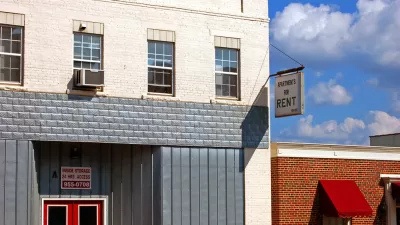According to the Urban Institute's Housing Affordability for Renters Index, the number of renters who can afford to buy a home in their metropolitan area is generally increasing when compared to the housing bubble of the mid-2000s.

Laurie Goodman and John Zhu share news of a recently published Housing Affordability for Renters Index (HARI).
Goodman, Zhu, and colleagues at the Urban Institute created the HARI in March 2018, and have updated the index for 2019.
"The HARI improves upon other affordability measures by focusing exclusively on renters’ ability to buy homes," according to the post. "Moreover, unlike other indexes which focus on the average income, HARI evaluates the whole distribution of renter incomes in an area."
The report examines homeownership affordability for renters in 100 U.S. metropolitan statistical areas, using 2017 American Community Survey and the 2017 Home Mortgage Disclosure Act data.
The report summarizes its findings thusly: "For the nation as a whole in 2017, 27 percent of renters earned at least as much as households who recently purchased a home using a mortgage, a number similar to 2016. For most MSAs…affordability in 2017 was higher than it was in 2006, lower than it was in 2009, and similar to how it was in 2016."
For additional historical perspective: "For the 100 most-populous MSAs, houses were more affordable to local renters in 2017 than they were in 2006. In 2006, at the height of the housing bubble, fewer renters had the income to purchase a home. We observe an average of 6 percent more renters between 2006 and 2017 had the income to purchase a house."
FULL STORY: Housing Affordability for Renters Index: Local Perspective and Migration

Alabama: Trump Terminates Settlements for Black Communities Harmed By Raw Sewage
Trump deemed the landmark civil rights agreement “illegal DEI and environmental justice policy.”

Study: Maui’s Plan to Convert Vacation Rentals to Long-Term Housing Could Cause Nearly $1 Billion Economic Loss
The plan would reduce visitor accommodation by 25% resulting in 1,900 jobs lost.

Why Should We Subsidize Public Transportation?
Many public transit agencies face financial stress due to rising costs, declining fare revenue, and declining subsidies. Transit advocates must provide a strong business case for increasing public transit funding.

Paris Bike Boom Leads to Steep Drop in Air Pollution
The French city’s air quality has improved dramatically in the past 20 years, coinciding with a growth in cycling.

Why Housing Costs More to Build in California Than in Texas
Hard costs like labor and materials combined with ‘soft’ costs such as permitting make building in the San Francisco Bay Area almost three times as costly as in Texas cities.

San Diego County Sees a Rise in Urban Coyotes
San Diego County experiences a rise in urban coyotes, as sightings become prevalent throughout its urban neighbourhoods and surrounding areas.
Urban Design for Planners 1: Software Tools
This six-course series explores essential urban design concepts using open source software and equips planners with the tools they need to participate fully in the urban design process.
Planning for Universal Design
Learn the tools for implementing Universal Design in planning regulations.
Smith Gee Studio
Alamo Area Metropolitan Planning Organization
City of Santa Clarita
Institute for Housing and Urban Development Studies (IHS)
City of Grandview
Harvard GSD Executive Education
Toledo-Lucas County Plan Commissions
Salt Lake City
NYU Wagner Graduate School of Public Service





























